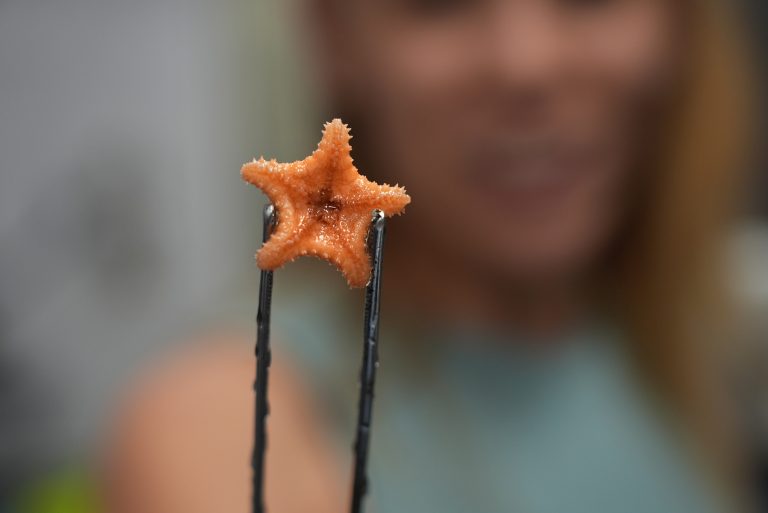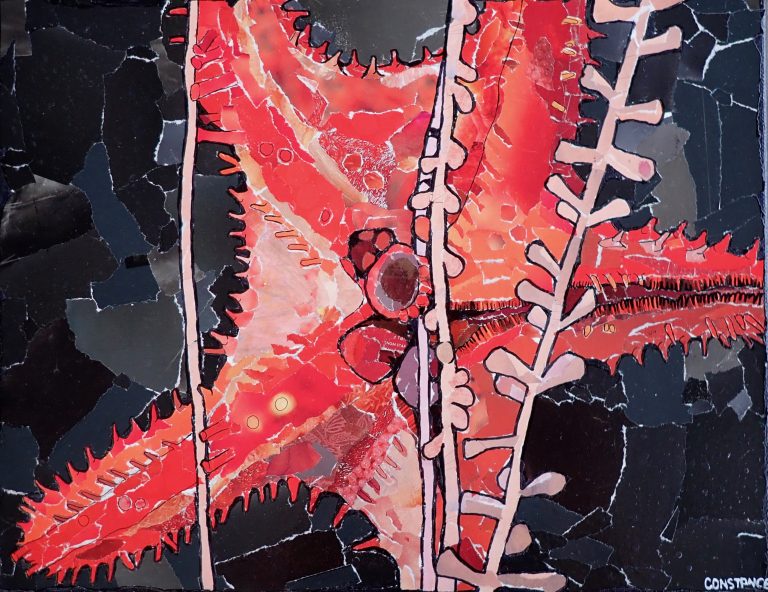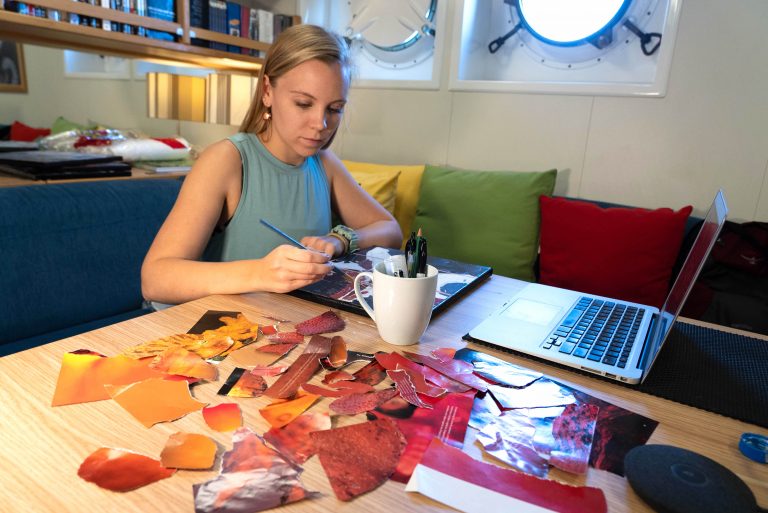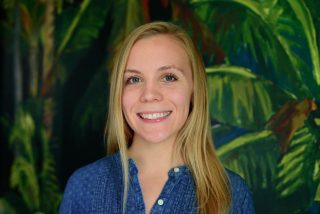As the Reseach Vessel Falkor made her way north to Honolulu, we prepared samples for shipping by pouring various colors of ethanol into hazardous waste containers in the wet lab. It looked — but did not smell — like Kool-Aid with vibrant purples, reds, and oranges. The colors, however, did not come from artificial dyes. The ethanol preservative was stained with purple victorgorgia corals, red stalked crinoids, and orange brittle stars. All 699 samples collected from the Pacific seafloor were neatly packed into hundreds of tubes, vials, bags, and boxes, ready to be shipped halfway around the world to the East Coast of the United States for processing.

From the hundreds of samples collected over the past month at sea, I completed eight upcycled magazine collages highlighting some of the unique organisms of the Phoenix Islands Archipelago. Before the expedition, the SOI team stressed the importance of bringing enough art supplies for a 34-day trip at sea. I packed 50+ magazines with ample blues and dark colors that I expected to see in the deep sea. Colors with long wavelengths like reds and oranges are the first to disappear as you descend into the water due to absorption, so I did not think I needed those colors to depict the deep sea. Clearly, I had not done enough research: when we descended on our first dive on a high seas seamount, the lights on the ROV illuminated bright red seastars, pink Chrysogorgid corals, orange homolid crabs. It turns out many deep-sea animals are red since the color red actually appears black at depth, making them nearly invisible to predators and prey. I had to go through all my magazines, searching for every last bit of red paper I could find just to make a collage of a vibrant red seastar on a bamboo coral.

Unlike me, who came unprepared with respect to my red paper inventory, the Falkor crew meticulously stocked all of the supplies needed to sustain a ship with 39 passengers for 34 days in the Pacific Ocean. There was a competition on the whiteboard in the Mess to see who could guess how much fuel we would have remaining when we returned to Hawaii. I like to think that someone on the boat already knows the answer, but it was a fun game nonetheless. We started with almost 400 m^3 of fuel which sustained us as we traversed many seamounts in the high seas, US exclusive economic zone (EEZ), and protected areas.

But the amount of hard work and planning involved in sailing the Falkor to the Phoenix Islands Archipelago certainly paid off. I have had the opportunity to watch the science team perform novel experiments on deep-sea coral immunity, characterize coral biodiversity, and get excited about seeing new types of corallivory. Since all corals, deep and shallow, are vulnerable to human impacts, cruises like this are necessary to help understand and protect our deep sea ecosystems. Through my collage series, I share some of the diverse organisms adapted to deep sea life. Although my time aboard the Falkor is over, I look forward to creating deep sea artwork based on my experience at sea. Thank you to the Schmidt Ocean Institute team both on- and off-shore for this unforgettable expedition!

